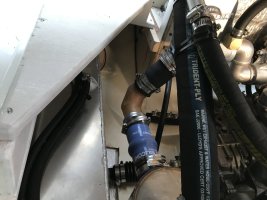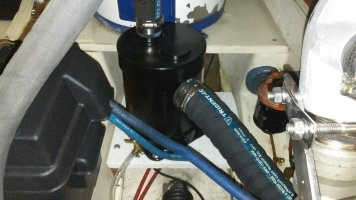Such a frustrating cobbled together mix of hoses and fittings on these engines! It's a mess. I had the same problem. My lift muffler was delaminating so I had a new one made of stainless steel with the same input size as the exhaust riser output to simplify things. Of course I then complicated it again by adding a hump hose and a fiberglass elbow. I was going to try to match the entire exhaust system to the 2-inch exhaust riser exit fitting but I couldn't remove the exhaust thru hull without damaging the transom so I just kept it at 1.5 inches between there and the lift muffler.The exit fitting on the riser is 1.99" OD. The input of the lift muffler has an OD of 1.71" and that's with some rubber hose on it to increase diameter. The output of the muffler is 1.65". The hose ID is 2.00".
If I were you I would probably replace all the hoses in the system to make sure they are not internally delaminating and are properly sized and clamped. Big painful job but worth it in the end.










